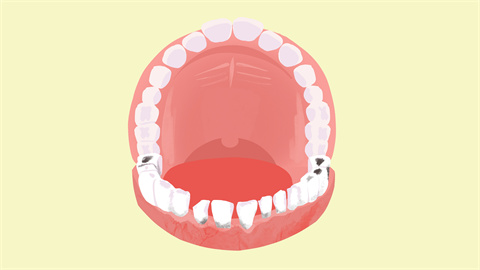牙齿脱落该What to do
Tooth loss may result from natural aging, external trauma, periodontitis, dental caries, or periodontal abscesses. It can be improved through enhanced oral care, local treatments, and medication. If tooth loss occurs frequently or is accompanied by severe pain, prompt medical attention is necessary.

1. Natural Aging: As people age, gum recession and alveolar bone resorption weaken the support for teeth, leading to loosening and eventual loss. This is often accompanied by loose teeth. It is recommended to enhance oral hygiene by using a soft-bristled toothbrush, undergo regular dental check-ups, and consider dentures or other prosthetic restorations when necessary.
2. External Trauma: Teeth may be knocked out due to accidental impact or chewing hard objects, potentially accompanied by gum bleeding and pain. Immediately rinse the dislodged tooth with clean water and seek emergency dental care for possible re-implantation. After treatment, avoid chewing hard foods with the affected tooth.
3. Periodontitis: Long-term plaque buildup leads to chronic inflammation of the periodontal tissues, damaging gums and alveolar bone, resulting in loose and eventually lost teeth. Symptoms include red, swollen gums and bad breath. Under medical guidance, medications such as metronidazole tablets, doxycycline hyclate capsules, and compound chlorhexidine mouthwash may be used. Additionally, professional periodontal cleaning (scaling and root planing) should be performed to remove plaque and tartar.
4. Dental Caries: Bacterial decay causes structural damage to the tooth. If left untreated, it can progress to the root, ultimately causing tooth loss, often accompanied by toothache and visible cavities. Seek dental treatment such as root canal therapy (removal of infected pulp and filling of root canals). In severe cases, extraction followed by restoration (e.g., bridge or implant) may be required. Regular use of fluoride toothpaste can help prevent caries.
5. Periodontal Abscess: Bacterial infection within periodontal pockets leads to pus formation, destroying surrounding tissues and causing tooth mobility and loss. Symptoms include swollen gums and pus discharge. Follow medical advice to take antibiotics such as amoxicillin-clavulanate potassium tablets, tinidazole tablets, and use hydrogen peroxide solution as a rinse. Surgical incision and drainage may also be needed to remove the abscess.
Daily care should include brushing teeth twice daily, rinsing after meals, and regular professional teeth cleaning. Avoid using teeth to bite hard objects to reduce injury risk. Consume calcium-rich foods to support strong and healthy teeth.





